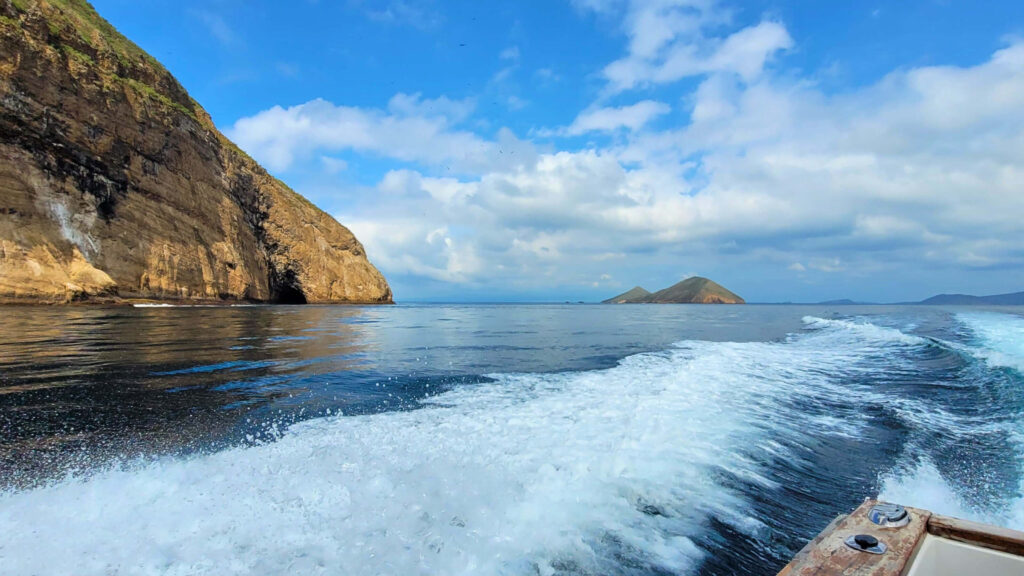How to Travel to the Galapagos Islands
Traveling to the Galapagos Islands is often a once-in-a-lifetime experience, filled with excitement and anticipation. However, even seasoned travellers can find planning the perfect Galapagos itinerary challenging due to the numerous details involved. This comprehensive guide will help you navigate every step, from getting to Ecuador to exploring the individual enchanting Islands. Whether you’re a first-time visitor or a seasoned traveller, this guide will ensure your journey is smooth and enjoyable.
Arriving to Ecuador
Numerous airlines, including American Airlines, Delta, KLM, Iberia and LATAM, offer direct flights to Quito (Mariscal Sucre International Airport) and Guayaquil (José Joaquín de Olmedo International Airport) from major cities in the US, Canada, and Europe. For example, you can find direct flights to Quito from New York that take approximately six hours. From Miami, direct flights are available to both Quito and Guayaquil, with the flight duration being around four hours. The flights of KLM from Amsterdam stop in Quito and continue to Guayaquil.
Quito vs. Guayaquil
Quito, nestled high in the Andes, is known for its historical charm and cooler climate. It’s a UNESCO World Heritage site with a vibrant cultural scene and many attractions like the Mitad del Mundo, which marks the equator. However, Quito’s high altitude (2,850 meters or 9,350 feet above sea level) can be a challenge for some travellers, causing altitude sickness in some cases.
Guayaquil, on the other hand, is Ecuador’s largest city and main port. Located at sea level, it offers a warmer, tropical climate and is closer to the Galapagos, which can mean shorter and often less expensive flights to the islands. Guayaquil’s modern airport is smaller and easier to navigate than Quito’s, which can be a significant advantage for quick transfers. Many travellers are not aware of the diverse visitor sites in the vicinity of the city of Guayaquil.
Traveling from the Mainland to the Galapagos Islands
Before boarding your flight to the Galapagos, you must obtain a Transit Control Card (TCT) for $20 at the airport. This card helps regulate the number of visitors to the islands. Additionally, be mindful of bio-security measures: avoid bringing fresh fruits, vegetables, or any other organic material that could disrupt the fragile ecosystem.
Flights to the Galapagos
Avianca offers direct flights from Quito to Baltra every Friday. Flights often have a short stopover in Guayaquil, sometimes requiring disembarkation, which can be a minor inconvenience but provides a break to stretch your legs.
The flight from Quito to the Galapagos takes approximately 2.5 hours, from Guayaquil about 3.5 to 4 hours. The latest flights typically arrive in the early afternoon, and it’s important to note that the Galapagos Islands are one hour behind mainland Ecuador.
Which LATAM fare do I have to purchase as a foreigner?
When booking with LATAM, ensure you choose the correct fare class for tourists, otherwise, you might face additional charges or even denial of boarding. (LATAM website: For foreign passengers non-resident in Ecuador, the Full fare applies exclusively. Any other rate is subject to an additional airport fee of $150 + IVA).
Arriving in the Galapagos Islands & National Park Fee
Upon arrival in the Galapagos, you will need to pay the National Park fee, which recently increased to $200 per person. The rise is the first one since the 1980 and is crucial to further safeguard this unique ecosystem. This fee must be paid in cash and supports conservation efforts. The fee structure varies depending on the visitor’s nationality and age, and it’s crucial to have the correct amount in US dollars, as credit cards are not accepted.
New National Park Fees for the Galapagos Island take effect 1. August 2024:
Arrival on Baltra and traveling from Baltra Airport to Puerto Ayora
Once you land at Baltra Airport, take the Lobito bus for $5 to the Itabaca Channel. A ferry across the channel costs $1 per person. On the Santa Cruz side, taxis are available to take you to Puerto Ayora for about $25, a journey that lasts around 45 minutes. Alternatively, you can arrange for a taxi to pick you up directly from the airport, saving you the hassle of multiple transfers. For an added adventure, consider combining your arrival with a visit to the highlands. If you aim to catch the 3 PM ferry to Isabela Island, be sure to take an early flight.
Arrival on San Cristobal
San Cristobal Airport is conveniently close to the town of Puerto Baquerizo Moreno. A short taxi ride will bring you directly to your accommodation or the town center, making the transition smooth and straightforward. Puerto Baquerizo Moreno, the capital of the Galapagos province, offers a charming waterfront with restaurants, shops, and a relaxed atmosphere.
The proximity of the airport to the town makes San Cristobal a convenient starting point for your Galapagos adventure. You can easily explore attractions like the Interpretation Center, which provides an excellent overview of the islands’ natural and human history, and La Lobería, a beautiful beach known for its sea lion colony and snorkeling opportunities.
Inter-Island Ferries / Speed Boats
Ferries between the islands are a popular mode of transportation. It’s crucial to book your tickets in advance, especially during peak seasons. Ferries generally operate in the morning and afternoon, with the journey between islands taking 2-3 hours depending on conditions.
Generally speaking, the ocean is calm from mid-December to mid-April. The full moon does impact the swell each month a slightly bit. During the changing months April, May and June and November the conditions can change daily, but are mostly tranquil. From July to November you have to expect bumpy rides throughout the entire archipelago. The most crucial step to a great time in the Galapagos is being prepared while not over-preparing.
As of June 26th, the harbor fee is included in the ferry ticket price. Water taxis to and from the ferries cost $1 per person each way. Note that there is a $10 per person National Park fee when entering Isabela Island.
Tip: Avoid paying for “first-class” upgrades as ferry seating operates on a first-come, first-served basis.
Remember, there is no direct ferry connection between Isabela Island and San Cristobal.
Ferries to Floreana Island
Ferry services to Floreana Island are less frequent and therefore more expensive. Plan your trip accordingly and book in advance to secure your spot.
Flights Between Islands
Two operators offer flights between the islands: Emetebe and ESAV. Opting for a flight, especially between Isabela and San Cristobal, is a great choice for those prone to seasickness or striving for comfort. Note that the maximum luggage allowance is 25lbs including your carry on. Each pound more will be charged at the airport ($2 per pound) and your bags might come with a later flight that is having more weight capacity available. To avoid any of these issues you can buy an upgrade for your luggage already when booking the ticket. The max. allowance is 35lbs, so be conscious about what to pack for your trip to the Galapagos Islands.
Conclusion
Traveling to the Galapagos Islands requires careful planning, but the effort is well worth it. From obtaining the necessary travel documents to navigating inter-island transport, this guide provides all the information you need for a seamless trip. Plan ahead, book your ferry tickets early, and get ready to explore one of the most unique destinations on Earth. For more details and to book your ferry tickets or tours on the Galapagos Islands, visit our website.


